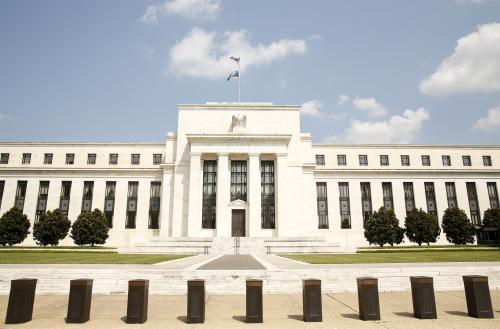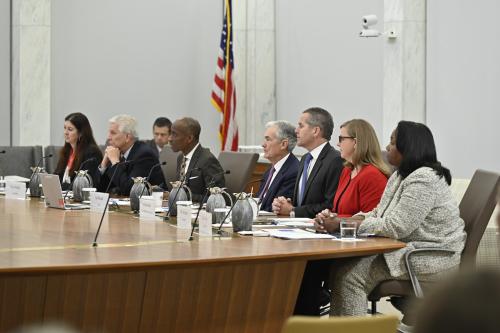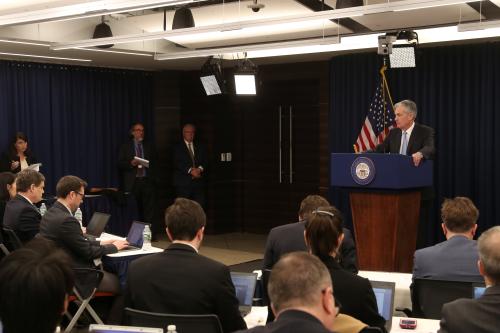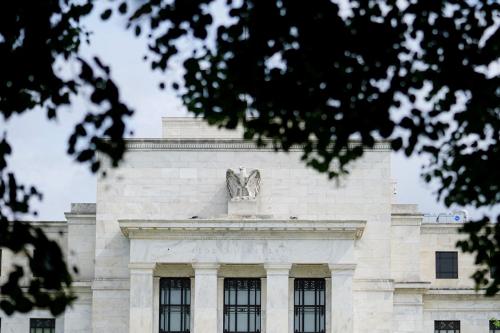Narayana Kocherlakota, who was president of the Federal Reserve Bank of Minneapolis from 2009 to 2015 and is now at the University of Rochester, says in a new paper that the Fed has been and continues to be too timid in its monetary policy, largely because it has been intellectually trapped by the economics profession’s consensus that policy should be guided more by a formal rule than by policymakers’ discretion.
Kocherlakota makes the case in a new paper for the Brookings Papers on Economic Activity—“Rules versus discretion: A reconsideration”—and summarized his argument in a short video interview. Watch the video here:
The major benefit of any rule—such as the guide to setting interest rates devised by Stanford University’s John Taylor—is that it constrains the members of the Fed’s policymaking Federal Open Market Committee from keeping interest rates too low too long and producing unwelcome inflation.
That was a significant problem in the late 1970s when the consensus in favor of monetary-policy rules took hold. But Kocherlakota says the Fed and the world have changed since then. The Fed’s commitment to low inflation is very strong. And rules may lead the Fed to move too quickly to raise interest rates when economy is still struggling to recover from a severe recession.
“Putting in rules in terms of interest rates might be convenient for some bond traders, but it’s just going to get in the way of being able to generate macroeconomic goals,” Kocherlakota said in the interview.
Kocherlakota acknowledged that, as a Fed policymaker in 2009 and 2010, he was worried Fed policy would lead to too much inflation if it deviated from the widely cited Taylor Rule. He later changed his mind, and now sees that period as a case study in the Fed moving too timidly even though FOMC members’ projections show they expected the economy would fall short of the Fed’s employment and inflation goals for three years or more. One major reason, he argues, is that the Fed was too influenced by the Taylor Rule, which, he said, advises a more rapid return to normal interest rates in a recovery than Kocherlakota thinks wise.
“This was not just my own perspective by any means, but was very broadly held throughout the committee…that the mode of behavior that the committee used pre-2007, which I’ll summarize as the Taylor Rule…there was a desire to stick pretty close to that. That desire to stick close to pre-2007 rules led the committee to favor a very slow recovery in respect to both inflation and unemployment.”
Even today, he said, the Fed is restrained by the influence of the rule, citing Fed Chair Janet Yellen’s discussion at the Fed’s Jackson Hole conference:
“I fear we see a similar conservatism in Chair Yellen’s speech that she gave at Jackson Hole a couple of weeks ago, where she outlined what the Fed’s likely response would be to a recession. You again see the very slow return to maximum employment, taking 4 years after the initial shock. And actually in the forecast horizon, which is a decade, you do not see inflation return to target in her pictures. There she’s using as a basis of her analysis a slightly more aggressive version of Taylor’s original rule, but it’s still very slow relative to what the Fed should be doing in terms of achieving its goals as rapidly as possible.”
To learn more, read the full paper by Kocherlakota in the Fall 2016 Brookings Papers on Economic Activity.
The Brookings Institution is committed to quality, independence, and impact.
We are supported by a diverse array of funders. In line with our values and policies, each Brookings publication represents the sole views of its author(s).





Commentary
Former Fed policymaker Kocherlakota: Fed was—and still is—intellectually trapped by adherence to rules
September 15, 2016